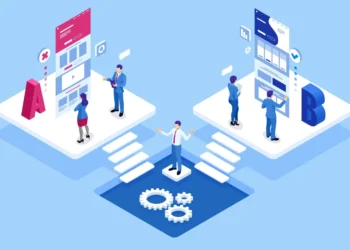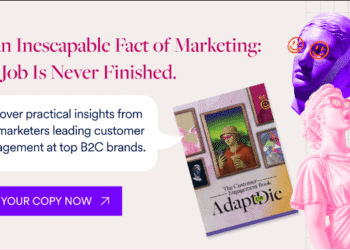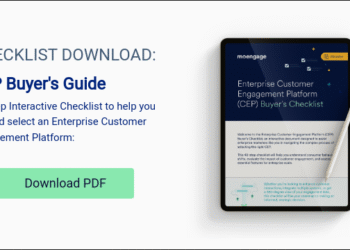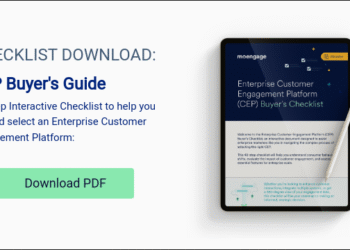Your studio just spent a fortune acquiring a new player. You celebrated as they downloaded your game, completed the tutorial, and played for a solid 20 minutes. The next day? Silence. Day three? Nothing.
Sound familiar? It’s the multi-billion-dollar heartbreak of the mobile gaming industry. UA costs are rising, yet player churn remains brutally high. A 2024 report highlights that 77% of mobile app users churn within the first three days of an install. You are essentially pouring water into a leaky bucket.
This is precisely why, in 2025, retargeting is no longer a “nice-to-have” marketing tactic; it is an essential survival strategy. It’s about patching the leaks in your bucket by intelligently re-engaging players who have lapsed, are at risk of churning, or haven’t yet reached their full value potential. In an era of increasing privacy constraints and economic pressures, mastering retargeting is the key to improving cost efficiency, maximizing player LTV, and achieving a sustainable ROAS.
So, how do you win back players in this new, privacy-first world? Let’s dive in.
The Economics of Retargeting in Mobile Gaming
To understand the power of retargeting, you first need to appreciate the brutal economics of mobile UA. The cost to acquire a new, loyal player has skyrocketed due to market saturation and fierce competition. According to Statista, the average cost per install (CPI) in the US for an iOS game can easily exceed $5, and for more competitive genres like RPGs and Strategy, this can climb into the double digits.
Now, compare that to the cost of re-engaging an existing user. Industry data consistently shows that it is 5 to 25 times cheaper to retain an existing customer than to acquire a new one.
Two realities make retargeting essential:
- Most players churn extremely fast. Benchmarks show median retention in mobile games drops precipitously, average Day-1 and Day-7 retention figures are low across genres, and studies repeatedly note ~70–80% of users are lost within the first 3 days unless engaged. That’s a tiny window to justify costly UA.
- Monetization still grows, but UA cost pressure is real. Global in-app spend (IAP / subscriptions) continues to expand — Sensor Tower reported $150 billion in mobile IAP revenue in 2024 — yet competition for quality installs keeps CPIs and media costs elevated. That makes re-engaging and monetizing existing users a far more efficient play than only hunting new installs.
Put simply: math favors re-engagement. If you can bring back a user who already knows your game — even briefly — they’re much likelier to convert to a purchase or ad monetization event than a cold install.
The Impact of Privacy & Platform Shifts
The biggest challenge—and opportunity—for retargeting in 2025 is navigating the new privacy landscape. The era of the IDFA (Identifier for Advertisers) on iOS being readily available is over, and Google’s Android Privacy Sandbox is following suit.
Here’s what this means for developers:
- The Old Way (Pre-ATT): Developers could use a player’s unique device ID to track them across different apps and websites, serving them hyper-personalized ads with near-perfect attribution. If a player stopped playing your RPG, you could hit them with an ad for it while they were browsing social media.
- The New Reality (Post-ATT & SKAdNetwork): With Apple’s App Tracking Transparency (ATT) framework, the vast majority of users opt out of tracking. This makes deterministic, user-level attribution incredibly difficult. Apple’s SKAdNetwork (SKAN) provides conversion data, but it is aggregated, delayed, and limited, making it hard to know precisely which ad creative brought a specific user back.
So, is retargeting dead? Far from it. It has just evolved. Here’s what developers are working with now:
- First-Party Data is Gold: The most valuable data you have is your own. In-game behavior, purchase history, level progression, session length, character preferences—this is all rich, consent-based data you can use to build powerful user segments for re-engagement.
- Probabilistic Attribution and Incrementality: Instead of relying on deterministic matching, the industry has shifted. Probabilistic models use non-personal signals (like device type, OS version, and time of click) to make educated guesses about attribution. More importantly, incrementality testing has become the gold standard. This involves splitting your target audience into a test group (receives retargeting ads) and a control group (receives no ads) to measure the true “lift” or incremental impact of your campaign.
- Aggregated Data and Context: Platforms are providing more tools for aggregated analysis. You may not know that Player X came back from Ad Y, but you can know that Campaign Z targeting lapsed players in Japan led to a 10% increase in daily active users from that cohort.
Top retargeting strategies that actually work in mobile games
Below are the tactics studios are doubling down on in 2024–25 with examples and why they work.
1. Early, timed re-engagement (first 3–7 days)
Players who drop off in the first days are the cheapest to re-win. Triggered campaigns (push / in-app / paid ads) that hit players at specific drop points, e.g., after failing a tutorial, skipping a purchase opportunity, or reducing session frequency — show outsized ROI. Use short, incentive-based messaging (small currency gifts, time-limited boosters) and deep links to land players in the high-value experience (store, event, or limited quest).
Why it works: behavior is fresh and memory of the game still exists; incentives nudge players over the activation hump.
2. Predictive churn models and value segmentation
Rather than blanket retargeting, the best studios use ML to predict who will lapse and who is likely to respond to re-engagement. That lets you separate:
- At-risk mid-value players: nudge with moderate rewards.
- High-value “whales”: retarget with personalized offers, VIP events, or human-touched campaigns.
- Low-value free players: target with ad-based incentives (rewarded video) rather than expensive IAP promos.
3. Creative formats that drive re-installs and conversions
- Rewarded ads: offering in-game currency or boosters in exchange for watching an ad remains one of the best tools to re-engage without irritating players. High-quality rewarded experiences can lengthen sessions and increase spend.
- Playable ads for re-engagement: short interactive snippets that preview a new mode, event, or mechanic can be more persuasive than static banners. Playables help players quickly recall why they enjoyed your game and reduce friction to re-install. Industry reports show playable adoption and effectiveness climbing. Business of Apps+1
- Dynamic creatives: DCO that swaps imagery, messaging, and CTA based on user cohort (e.g., “We saved your 50 gems” vs “Exclusive VIP event tonight”) increase relevance and conversion.
4. Cross-channel orchestration
In-app ads are not the only place to retarget. Blending:
- Push notifications (for users with permission),
- Email (for registered users),
- Paid social and programmatic in-feed ads,
- Even CTV or DOOH for big IP titles,
gives multiple touchpoints and improves re-engagement odds — especially when all channels are tied with deep links so the user lands directly into the intended screen.
5. Reward-first re-engagement mechanics
Consider campaigns where returnees receive guaranteed value: free spins, currency, event tickets, or temporary powerups. This reduces friction, signals goodwill, and often costs less per incremental dollar of revenue than paying for a full new-user acquisition.
Creative Trends Driving Better Results
In retargeting, the message is just as important as the targeting. Generic, boring creatives will be ignored.
- Rewarded Ads & Incentives: The most effective re-engagement tactic is a clear value exchange. Instead of just asking players to come back, give them a reason to. “Claim your 1,000 free gems now!” or “Your welcome-back chest is waiting!” This approach feels less like an ad and more like a gift.
- Playable Ads for Re-engagement: Traditionally a UA tool, playable ads are incredibly effective for retargeting. They remind a lapsed player of the core gameplay loop they once enjoyed, providing an interactive and fun nudge back into the game without the friction of a full app open.
- Dynamic Creative Optimization (DCO): This is personalization at scale. DCO platforms automatically generate thousands of ad variations tailored to different user segments. Imagine an ad that shows the player’s favorite character, mentions the exact level they were stuck on, or displays an item they viewed in the shop but didn’t buy. This level of relevance can break through the noise.
- Localization and Personalized Storytelling: This goes beyond simple translation. It involves adapting creatives to cultural nuances, holidays, and local events. A successful campaign in South Korea might leverage different art styles and messaging than one in Brazil.
Measurement: how to know retargeting is working (and avoid traps)
Classic last-click attribution is less useful now. Focus on:
- Incrementality / lift tests: randomize exposure for a subset of lapsed users to measure true causal uplift (did your campaign cause the extra spend/retention?). This is the gold standard.
- Cohort LTV tracking: measure not only installs or re-installs but longer-term revenue (7/14/30/60-day LTV) for retargeted cohorts.
- Engagement KPIs: session frequency, session length, ARPDAU changes for retargeted users.
- Cost per re-engaged payer / ROAS: retargeting ROI often beats fresh UA — case studies show multi-x improvements in ROAS for targeted cohorts versus generic prospecting. For example, RTB House’s re-engagement campaigns for Huuuge Casino reported several-times ROAS uplift
Practical roadmap: how to implement a modern retargeting program (step-by-step)
Phase 0 — Data & plumbing
- Centralize first-party events in a CDP or data warehouse (session starts, purchases, level-progress, ad interactions).
- Instrument deep links and universal links for every campaign.
Phase 1 — Quick wins
- Launch a 3–7 day “welcome back” campaign for users who haven’t launched in X days with a small reward. Use push + in-app + social ads.
- Test a playable ad variant for a high-value event (e.g., new mode) and measure re-install CVR vs static video.
Phase 2 — Modeling & segmentation
- Build a churn-prediction model (probability of not returning within 7 days). Prioritize users with high value and high re-engagement probability.
- Create value buckets (whales, mid, casual) for tailored offers.
Phase 3 — Creative scale & automation
- Automate DCO templates: swap creative elements by persona and AB test messaging.
- Introduce frequency caps, channel sequencing (push → email → paid social), and optimization windows.
Phase 4 — Measurement & optimization
- Run incrementality tests (holdout groups) to quantify real lift.
- Move budgets to cohorts/campaigns that pass lift thresholds.
Common pitfalls to avoid
- Spending to retarget everyone: blanket campaigns waste spend. Use scoring and value segmentation.
- Over-frequency: more exposures don’t equal better outcomes; they often lower brand sentiment and increase uninstalls.
- Bad deep link UX: sending a player to the wrong screen or to an empty promo will kill conversion. Test every funnel.
- Ignoring incrementality: if you can’t prove lift, you can’t prove ROI. Holdout experiments are non-negotiable in 2025.
Conclusion: Your Best New Players Are the Ones You Already Have
Acquiring users will always be important, but the economics and realities of 2025 make re-engagement the place where you can materially increase LTV with far less spend. Focus on fast, personalized early interventions, back them with predictive models and first-party data, use rewarded/playable creatives to lower friction, and measure with incrementality rather than vanity metrics.

















